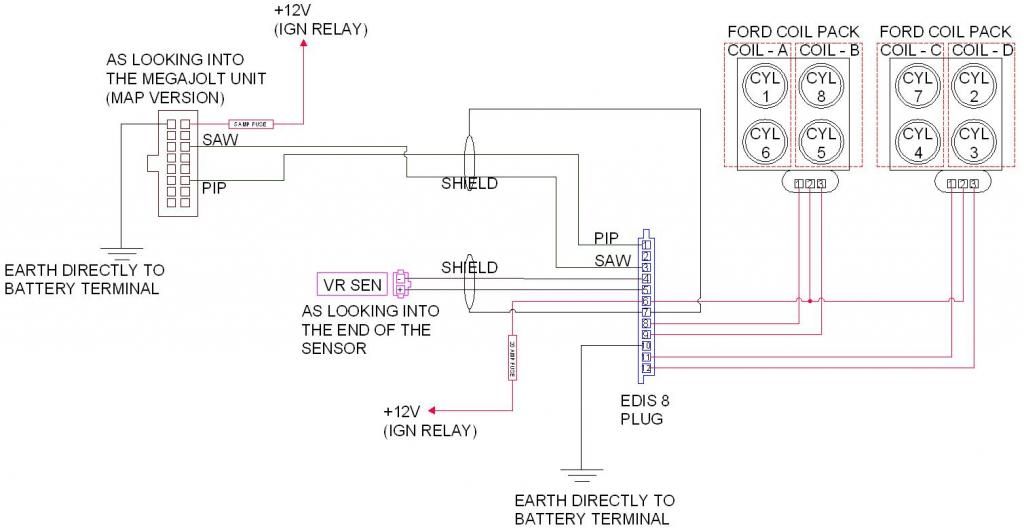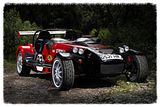mcerd1
|
| posted on 5/8/14 at 10:35 AM |

|
|
quote:
Originally posted by Irony
I have now fabricated a new VR Sensor Bracket which is a lot stiffer and a lot better placed for viewing and protected from road debris etc. I think
the original bracket was 10 degrees out so I have done the best I can to make it correct. I have to say finding TDC without a proper gauge is very
difficult. I put a pencil down piston 1 spark plug hole and rotated the crank until I found TDC. I have to say its a bit rough. The Rover timing
marks seems to concur with my own estimate though. On starting the car ran better.
You need to make yourself a 'piston stop' tool
(you can buy them, but why spend the money...)
get yourself an old spark plug and a bit of threaded bar small enough to fit through the plug once its been hollowed out
the best way is to drill and tap it so the threaded rod crews through if not weld a nut on the top end of the plug
this gives you a spark plug with a length of bar sticking out the end (round off the end that will stick into the engine)
and you can adjust the length by screwing it in/out and use a nut as a locknut to lock it
once you've made the tool, disconnect the battery to make sure your starter can't engage (even by accident)
remove the plug on No1 cylinder and fit the piston stop
turn the engine over by hand clockwise slowly until it hits the stop (you make need to adjust the length of the stop, ideally you want it to stop the
piston a few degrees before TDC)
make a temporary mark this position
turn the engine over by hand anti-clockwise slowly until it hits the stop and make a temporary mark this position
the true/exact TDC is half way between these temporary marks - so measure that as accurately as possible and make that your new TDC mark 
its just as accurate as doing it with dial gauges and easier to do it to 
here's the method in action:
http://www.youtube.com/watch?v=PD0ZRc7Dy28
[Edited on 5/8/2014 by mcerd1]
-
|
|
|
|
|
britishtrident
|
| posted on 5/8/14 at 10:42 AM |

|
|
My first port of call would be to remove and clean the idle/slow running jets.
[I] “ What use our work, Bennet, if we cannot care for those we love? .”
― From BBC TV/Amazon's Ripper Street.
[/I]
|
|
|
richardm6994
|
| posted on 5/8/14 at 11:32 AM |

|
|
I've just put this together which is exactly how my v8 megajolt system is wired up.....hope it is of some help;


|
|
|
Irony
|
| posted on 5/8/14 at 04:26 PM |

|
|
Thanks for all the replies guys! I am sure in the future this info will help not just me but others with similar issues!
|
|
|
coozer
|
| posted on 5/8/14 at 04:40 PM |

|
|
Yes indeed, been watching this as I am going megajolt, well megasquirt ignition only with a Holley carb as well.
Need to get the exhausts sorted before I start trying it though  
1972 V8 Jago
1980 Z750
|
|
|
Irony
|
| posted on 12/8/14 at 12:02 PM |

|
|
I reckon I have the RV8 running a lot better now. Sounds much better. Thanks to all the people that helped me out in the above thread. I started it
up on Saturday and ran it up to temperature for the first time. It was a hot day and it got up to temperature in 10-15 minutes and the fan kicked in
at 86 degrees and shut off again 4-5 minutes later at 82.
Turns out my problems all stemmed from incorrect ignition cables and a megajolt VR sensor installation problem. The wiring diagrams in this thread
cleared any problems up for me.
The only issue I have now is that the idle speed gently increases with engine temperature. On starting from cold the idle speed was about 800rpm but
that crept slowly upwards to about 1200-1300 when warm and stayed there. I think it's probably incorrectly tuned idle screws on the weber 500
carb. I tried setting them up before but I with the wrong ignition cable setup it made no difference. I'll get onto it as soon as I get some
time.
I am also thinking of buying a new water pump, my current water pump is of unknown history and as they are a critical part I think I am going to play
it safe. I have been reading my copy of Des Hammils 'How to power tune the Rover V8' and it recommends changing the water pump every 25K.
Interesting in the book John Eales of J E Developments fame is quoted as saying he believes that Rover miscalculated the temperatures at which Rover
V8s should run. He says that they should be run at less than 80 degrees. He goes on to say that after building literally hundreds of Rover V8 racing
engines he has only had 2-3 cracked blocks/slipped liners. While I have the water system apart I might fit the Rover Hot Climate Thermostat that cuts
in at 74 instead of the standard one.
|
|
|
BaileyPerformance
|
| posted on 12/8/14 at 01:02 PM |

|
|
You right about the engine temp, unless thay have been top hat linered it's too easy to cook a rover v8 and cause the liners to move. From the
factory thay are just pressed in (with loctite)
We recommend 74deg stat.
We noticed the water temp on TVRs will be stable around 85 under load on the dyno, but if you don't keep your eye on it and it goes towards 95
then you have no option but to switch off the engine (bad idea normally) as the temp just keeps rising even with no load. It seems to run away for
some reason - I had wondered if the pump starts to cavitate.
|
NOTE:This user is registered as a LocostBuilders trader and may offer commercial services to other users
|
richardm6994
|
| posted on 12/8/14 at 01:22 PM |

|
|
Glad to hear the wiring diagrams were of some help.
With my RV8 installation, I went down the electric water pump route and digital controller.
There is no thermostat in my cooling system as temperature is controlled via the digital controller adjusting the pump speed to keep the engine at
85C.
Although the main reason for going electric water pump was space issues....there have been so many more advantages come from this route......no
overheating in traffic jams (pump can be running at 100% volume irrespective of engine rpm), very quick engine warm up on cold days, and the the pump
runs for a few minutes after you turn ignition off to eliminate heat soak issues....
I've got the EWP115 and it's kept up with all driving and weather conditions and also my recent rolling road session.....the only downside
is that when the pump is at 100% and the kenlowe fan kicks in there is a lot of draw on the battery.

|
|
|
Irony
|
| posted on 12/8/14 at 01:30 PM |

|
|
quote:
Originally posted by BaileyPerformance
You right about the engine temp, unless thay have been top hat linered it's too easy to cook a rover v8 and cause the liners to move. From the
factory thay are just pressed in (with loctite)
We recommend 74deg stat.
We noticed the water temp on TVRs will be stable around 85 under load on the dyno, but if you don't keep your eye on it and it goes towards 95
then you have no option but to switch off the engine (bad idea normally) as the temp just keeps rising even with no load. It seems to run away for
some reason - I had wondered if the pump starts to cavitate.
The Des Hammil Book talks about cavitation. Some thing about the blade tips moving quickly enough to create bubbles as there going around which
decreases water pressure. It seems there are a lot of different water pump pulleys which will give you different blade speeds. Faster is not always
better. Apparently race engines are better suited smaller pulleys because of their constant high revs.
|
|
|
mcerd1
|
| posted on 12/8/14 at 02:37 PM |

|
|
quote:
Originally posted by Irony
The Des Hammil Book talks about cavitation. Some thing about the blade tips moving quickly enough to create bubbles as there going around which
decreases water pressure. It seems there are a lot of different water pump pulleys which will give you different blade speeds. Faster is not always
better. Apparently race engines are better suited smaller pulleys because of their constant high revs.
if you've ever driven a speed boat you might come across the same issue - just flooring the throttle can result in you going nowhere quick +
lots of noise from the prop
if you get lots of cavitation it can cause of pitting on the blades - looks like what you'd get from after shot blasting a very rusty bit of
steel, but without the rust - eventually it eats right through the blades...
[Edited on 12/8/2014 by mcerd1]
-
|
|
|













